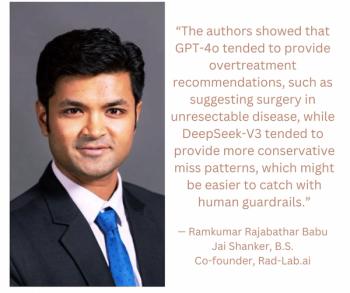
Essential Questions for Assessing Artificial Intelligence Vendors in Radiology

In a recent video interview, abdominal radiologist Sonia Gupta, MD discussed key principles in assessing potential alliances with artificial intelligence (AI) vendors and the potential of AI to alleviate the time-consuming, administrative aspects of patient care.
What are the key questions radiologists should ask when assessing artificial intelligence (AI) vendors? While the list can be long, one important question is ascertaining the volume and nature of the data used to develop and train a given AI algorithm, according to Sonia Gupta, MD, an abdominal radiologist, and chief medical officer at Change Healthcare.
In a recent video interview, Dr. Gupta said knowing the volume of cases that went into the training of an AI model is an important consideration as is the diversity of that data in terms of factors such as age, gender, health issues and comorbidities to name a few.
“All of those factors will influence the model training and ultimately the performance of that AI algorithm,” noted Dr. Gupta, who lectured about AI at the recent Society for Imaging Informatics in Medicine (SIIM) conference. “I encourage radiologists looking at potential AI vendors to dig into that information right off the bat.”
Other essential considerations include how the AI algorithm will be integrated into the current workflow and establishing timeline expectations for that integration into one’s radiology practice, according to Dr. Gupta, who is affiliated with Radiology Partners.
Dr. Gupta said there is a lot of potential for AI to mitigate some of the administrative burdens for radiologists and allow them to get back to the essentials of interpreting imaging and facilitating optimal patient care.
“I really want to see AI take the lead (in reducing administrative tasks) and make things easier so I can spend more time looking at the images and doing what I was trained to do,” added Dr. Gupta.
For more insights from Dr. Gupta, watch the video below:
Newsletter
Stay at the forefront of radiology with the Diagnostic Imaging newsletter, delivering the latest news, clinical insights, and imaging advancements for today’s radiologists.




























